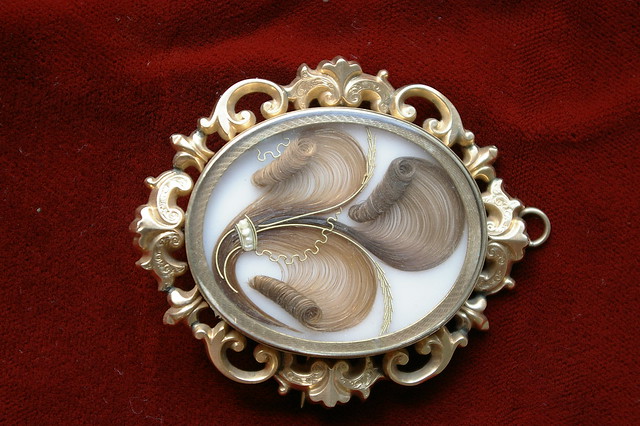What can we learn from the way a culture deals with death, particularly how they handle dead human remains? As Belk explains in “Posessions and the Extended Self,” in modern Western cultures, bodies–and their associated smells and effusions–are associated with negative forms of contamination. This aversion to contact with someone else’s body, Belk argues, is expressed in the way crematoria sift through human “cremains” to remove any traces that retain too much of their original form as bones, teeth, etc. Yet, again as Belk explains, the aversion to bodies, especially dead bodies, has numerous cultural and historical exceptions. These exceptions include actual and symbolic cannibalism, the collection and reverence of saintly relics, and as Luke A. Fidler describes in his essay, “Impressions From the Face of a Corpse,” the practice of creating memento mori of the dead:
Death masks also record the work of human hands. They figure the body as something subject to post-mortem manipulation, as a kind of storehouse waiting to be raided by curious scientists, churchmen, or souvenir-seekers. Autopsies, for instance, left their marks. Beethoven’s death mask, taken two days after he died, shows the saw marks where the composer’s ear bones were removed. His left ear later wound up in a curiosity cabinet.
In the Canterbury Tales, Geoffrey Chaucer’s portrait of the Pardoner depicts–and perhaps subtly mocks–the medieval practice of collecting the finger bones of saints, and splinters of the true cross. During the 19th century, in Europe and the United States, grieving relatives transformed the hair of dead relatives and loved ones into elaborate jewelry and decorative objects. To this day, some Christian faiths maintain the bread and wine consumed during communion is transformed into the body and blood of Christ at the moment of consecration.
- What might explain why hair jewelry, fashionable for over a century in some cultures, is now considered by most to be a relic of the past, something to be collected, perhaps, but not worn? Why do we no longer fill cabinets of curiosity with trinkets of dead human bone and flesh? Why has the doctrine of transubstantiation become a contentious issue among Christian faiths? What can we learn from studying shifting patterns of human behavior with regard to dead things? How might we explain variations in cultural traditions and taboos across cultures and historical periods?
Carefully read Fidler’s essay, and use that piece and some of the resources linked in this prompt as a starting point for some quick research. Combine a web search with a search of the library’s eJournals, looking for resources that might help us understand more about the origins of our taboos and traditions regarding the dead. Craft a post that summarizes the results of your research and provides links or citations to useful resources.
Posting: Group 1
Commenting: Group 2
Category: Dead Things
In your Blog #3 post, you should do more than offer a list of source summaries. Rather, you should frame the summary of your research, as a cohesive response to a research question that is posed or suggested by this prompt. Please carefully read and follow the guidelines and posting information for this blog as they’ve been outlined in the Blog Project Description.
Feature Image: This is a photograph of Alice Chaucer’s tomb in Ewelme, England. The sculpture depicts an uncorrupted and very well-dressed and ornamented Alice laying in state on top of a marble slab. In the marble “cage” below the slab, however, one can see glimpses like this one of the sculptor’s rendering of her dessicated corpse.


